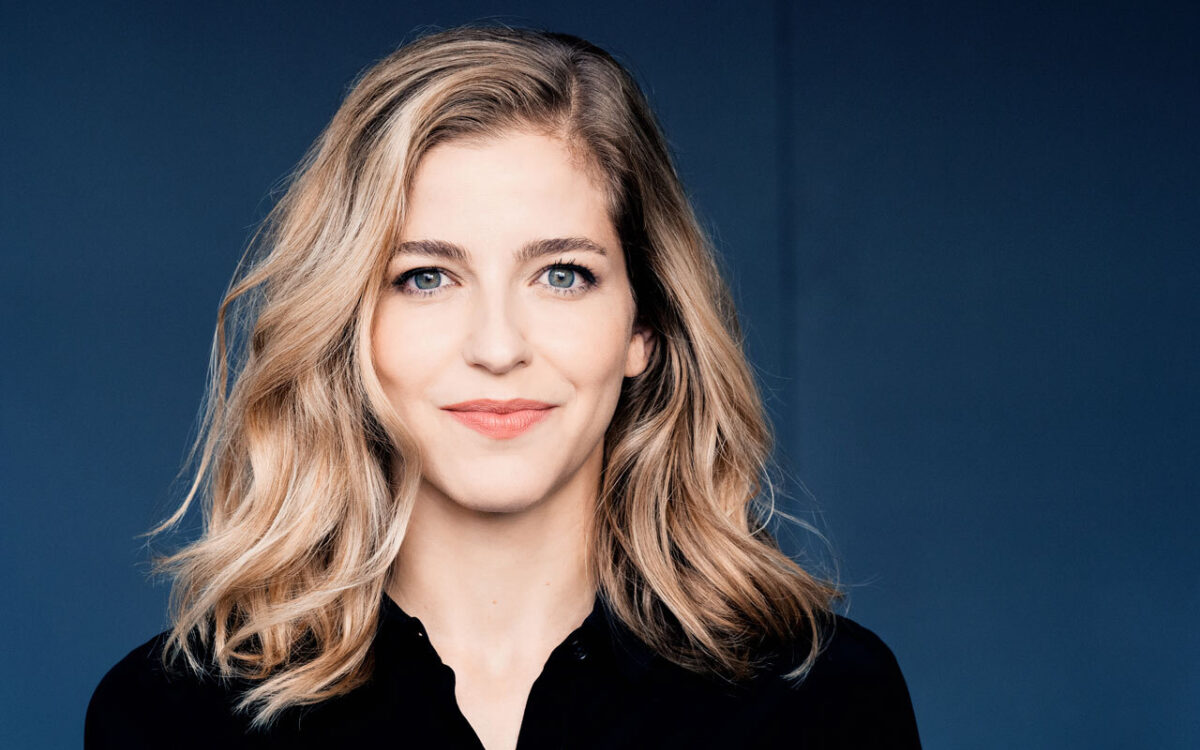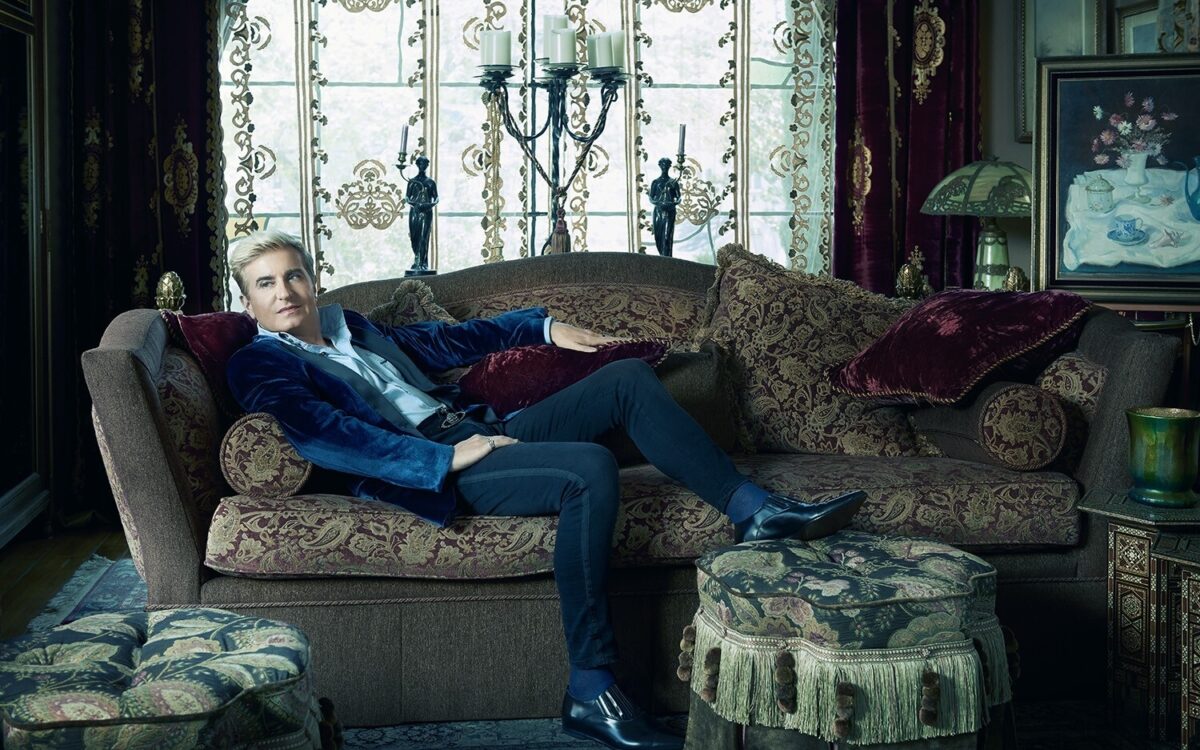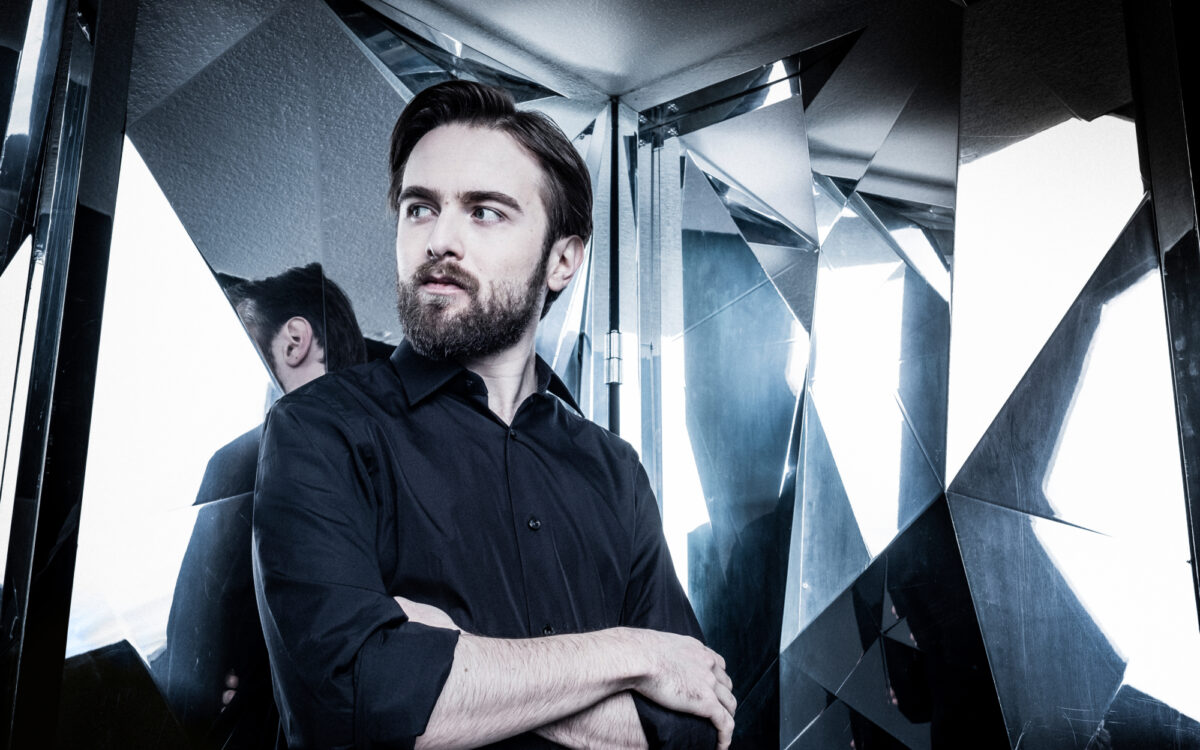Symphonic Dances
Sergei Vasilievich Rachmaninoff was born in Semyonovo, Russia, on April 1, 1873, and died in Beverly Hills, California, on March 28, 1943. He composed his Symphonic Dances during the summer and fall of 1940, mostly at Orchard Point, Long Island, New York. The score is dedicated to Eugene Ormandy and the Philadelphia Orchestra, who gave the first performance on January 3, 1941, in Philadelphia.
The score of Symphonic Dances calls for 2 flutes and piccolo, 2 oboes and English horn, 2 clarinets and bass clarinet, alto saxophone, 2 bassoons and contrabassoon, 4 horns, 3 trumpets, 3 trombones, tuba, harp, piano, timpani, triangle, tambourine, bass drum, side drum, tam-tam, cymbals, xylophone, tubular bells, glockenspiel, and strings (first and second violins, violas, cellos, and double basses). Symphonic Dances is about 33 minutes long.
Almost alone among the major Russian composers of his era—Tchaikovsky, Stravinsky, Glazunov, Prokofiev—Sergei Rachmaninoff didn’t write a single ballet. It’s not that he wasn’t interested. In a 1914 letter to conductor Alexander Ziloti, Rachmaninoff expressed his desire to “find a subject for a ballet,” although he admitted that he didn’t know any dancers, and that “for some reason I fear them!” In 1915 he began a collaboration with noted Moscow choreographer Kasyan Goleizovsky on a ballet to be called “The Scythians,” based on a poem by Konstantin Balmont. But Prokofiev beat him to the punch by completing his Scythian Suite the same year, and the project was abandoned. (Goleizovsky later claimed that Rachmaninoff incorporated some of the music he wrote for “The Scythians” into Symphonic Dances, but there is no hard evidence to support this claim.) In 1916, the brilliant stage director Vsevolod Meyerhold and the dancer Mikhail Mordkin approached Rachmaninoff with another ballet proposal, this one based on stories of Hans Christian Andersen, but that, too, never advanced beyond the planning stage. Highly self-critical and something of a loner, Rachmaninoff may have been temperamentally unsuited to deal with the messy collaborative conditions necessary for the creation of a new dance piece.
Even so, Rachmaninoff’s atmospheric and emotionally rich music has attracted numerous choreographers. His Rhapsody on a Theme of Paganini was set to dance several times, during the composer’s lifetime by his friend Mikhail Fokine (as Paganini for Colonel de Basil’s Ballets Russes in London in 1939) and afterwards by Leonid Lavrovsky (for the Bolshoi in 1960). In the 1953 Hollywood feature The Story of Three Loves, directed by Vincente Minnelli and Gottfried Reinhardt, Moira Shearer (of Red Shoes fame) performs a ballet choreographed by Frederick Ashton to the Paganini Variations—and then drops dead. Other symphonic and piano works by Rachmaninoff have been staged by such choreographers as Walter Gore, Christian Holder, Ben Stevenson, Riccardo Duse, and Patrice Montagnon.
When he began composing what became his Symphonic Dances in 1940—while recovering at a luxurious Long Island waterfront estate from an exhausting season that had included forty-one concert appearances—Rachmaninoff had in mind another possible collaboration with Fokine, a follow-up to Paganini. Fokine even lived nearby. So inspired was Rachmaninoff that he managed to complete the piano score in a matter of weeks (working from nine in the morning to eleven at night, only stopping for one hour in the afternoon to rest). On August 21, he wrote to his friend Eugene Ormandy, conductor of the Philadelphia Orchestra, with whom he had developed a close partnership during his years living in America, that he had finished “a new symphonic piece, which I naturally want to give first to you and your orchestra.”
Rachmaninoff also played fragments for Fokine. The choreographer responded with a letter. “Before the hearing I was a little scared of the Russian element that you had mentioned, but yesterday I fell in love with it, and it seemed to me appropriate and beautiful.” Fokine admitted that he found the waltz rhythm of the second movement problematical, however: “The valse rhythm seems to disturb you, to handicap you.... The thought of dancing is a side issue. If the joy of creating dances to your music is again given me, I should not at all feel the need for this rhythmic support.”
But the collaboration Rachmaninoff so strongly desired with Fokine on Symphonic Dances never materialized, for reasons that remain unclear. Rachmaninoff’s very busy touring schedule, his declining health, and his move to Los Angeles made it difficult for the two men to focus on the project. Fokine’s death on August 22, 1942, brought an end to their friendship and the possibility of a ballet. When he was informed of Fokine’s passing, Rachmaninoff wrote, “What a great sorrow! Chaliapin, Stanislavsky, Fokine—this was an epoch in art. Now all are gone! And there’s no one to take their place. Only trained walruses are left, as Chaliapin used to say.” At the time, Rachmaninoff himself had less than a year to live.
Symphonic Dances was Rachmaninoff’s last major orchestral work, and one of only four (with Rhapsody on a Theme of Paganini, the Third Symphony, and the Fourth Piano Concerto) that he had composed since leaving Russia forever in 1917, at the age of 44. All four were given their premieres by the Philadelphia Orchestra. Despite Fokine’s claim that Symphonic Dances possessed a strong “Russian element,” in fact the work sounds more “American” than anything else Rachmaninoff composed. The music is optimistic in personality, indulging less in the sorrowful nostalgia heard so often in Rachmaninoff, with a strong rhythmic drive, energy, and a pungent harmonic language that at moments recalls Stravinsky or Prokofiev. The prominent use of the alto saxophone in the first movement’s glowing, lyrical second theme seems informed by jazz. Indeed, in a newspaper interview he remarked that he considered calling the piece just “Dances,” “but I was afraid people would think I had written dance music for jazz orchestras.” Significantly, Rachmaninoff (who tinkered endlessly with the scores of the Third Symphony and Fourth Piano Concerto) never revised Symphonic Dances, and considered it (according to his sister-in-law Sofia Satina) “his best composition.”
In form, Symphonic Dances suggests a symphony in three movements. The first (marked “Non allegro”) opens with a snap: a strong rhythmic pulse announced quietly first in the violins on insistently repeated eighth-notes on the note C, then taken up by the other strings and the timpani. Over this infectious toe-tapping foundation, the woodwinds sing a jaunty tune shaped in descending intervals of a fifth, followed by a highly punctuated series of chords that recall the shape of the tune of the Dies irae from the Requiem Mass, a motif Rachmaninoff had used in several major orchestral works, including the Rhapsody on a Theme of Paganini. At rehearsal number 10, the mood changes (poco a poco rallentando), leading to the introduction of one of the composer’s most seductive melodies, given to the alto saxophone. (At the time, the saxophone was still a novelty in serious concert music, although it had been used by Bizet, Ravel, Glazunov, and recently by Prokofiev in Romeo and Juliet.) The lean combination of timbres here (the plush saxophone sound against sour accompaniment from oboes, clarinets, and English horn, with no strings) is stunning for Rachmaninoff, who tended in his preceding symphonic compositions to rely heavily (even too heavily) on the strings for emotional effect. After this haunting central episode the main themes return in a recapitulation section, with further references to the Dies irae motif, a unifying idea for the entire work.
The second movement—Andante con moto (Tempo di valse)—builds the strongest link to the world of dance, the well-worn form of the waltz. But this is a waltz notably lacking in confidence, stuttering as it begins in fragmentary rhythm, then switching between 6/8, 3/8, and 9/8 meter. Rachmaninoff adds the marking “Tempo rubato” at several strategic points, so the waltz tempo ebbs and flows, leaving the listener slightly off-balance, expecting a certainty that never completely materializes. It is a masterful conceit, and one that recalls other modernist deconstructions of the waltz form, especially Ravel’s La Valse of 1920.
Rachmaninoff’s obsession with the Dies irae motif dominates the final movement (Lento assai—Allegro vivace). Another pointed religious reference is made to the music Rachmaninoff himself wrote for the ninth section (“Blagosloven yesi gospodi”—“Blessed be the Lord”) of his All-Night Vigil, completed in 1915 during World War I. This theme comes from an ancient Orthodox liturgical chant and acts as an affirmative counterpoint to the pessimism of the message of the Dies irae. These two ideas intertwine in colorful and dramatic variations, by turns dark and triumphant, colored by the tolling of the tubular bells and contrasted with a serene middle section featuring a lamenting falling figure in the strings that seems to recall times gone by.
The nostalgic mood is broken by brass fanfares that lead into the finale, where the Dies irae motif emerges triumphantly. Just before the coda, where the chant tune reappears, Rachmaninoff wrote in the score the word “Alliluya,” followed by a citation of the alliluyas from the All-Night Vigil. In the Vigil, the alliluyas mark the end of the narration of Christ’s Resurrection. So at a time when the world was plunging into the terrible darkness of World War II, Rachmaninoff seems to be telling us that life will conquer death. At the end of the score, he wrote, “I thank Thee, Lord,” an expression of gratitude for a remarkable life of creativity.
Harlow Robinson
Harlow Robinson is an author, lecturer, and Matthews Distinguished University Professor of History, Emeritus, at Northeastern University. His books include Sergei Prokofiev: A Biography and Russians in Hollywood, Hollywood’s Russians. He has contributed essays and reviews to the Boston Globe, New York Times, Los Angeles Times, Symphony, Musical America, and Opera News, and program essays to the BSO, Los Angeles Philharmonic, New York Philharmonic, Aspen Music Festival, and Metropolitan Opera.
The first American performance of Rachmaninoff’s Symphonic Dances was (as noted above) the world premiere, given by Eugene Ormandy and the Philadelphia Orchestra on January 3, 1941.
The first Boston Symphony performances of Symphonic Dances were given by Seiji Ozawa on October 17, 18, and 19, 1974, followed by a Carnegie Hall performance that October 26.



